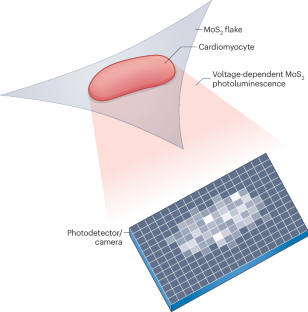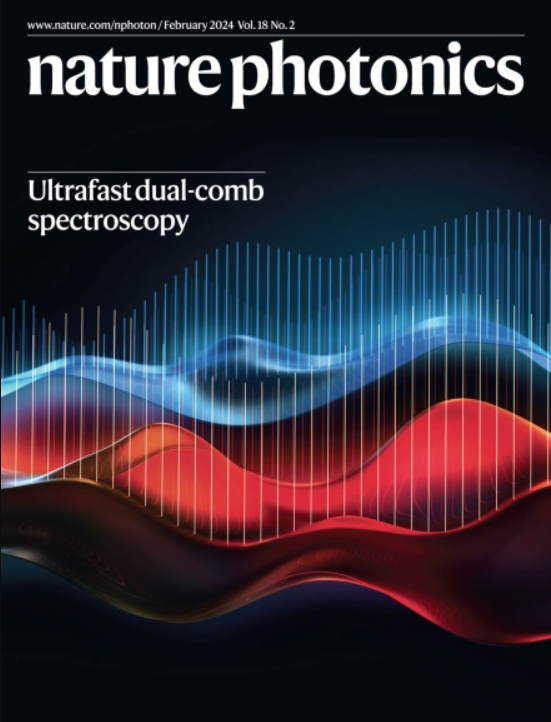看到原子厚度的薄片的快节拍
IF 32.9
1区 物理与天体物理
Q1 OPTICS
引用次数: 0
摘要
生物电压产生的局部测量是神经生物学、神经学和心脏病理生理学理解的关键驱动因素。研究人员现在已经证明,二维半导体MoS2中的激子-激子转换可以用于实时光学成像心肌细胞动作电位。本文章由计算机程序翻译,如有差异,请以英文原文为准。


Seeing quick beats with atomically thick sheets
Local measurements of biological voltage production are key drivers of understanding in neurobiology and neurological and cardiac pathophysiology. Researchers have now shown that exciton–trion conversion in a two-dimensional semiconductor, MoS2, can be used to optically image cardiomyocyte action-potentials in real-time.
求助全文
通过发布文献求助,成功后即可免费获取论文全文。
去求助
来源期刊

Nature Photonics
物理-光学
CiteScore
54.20
自引率
1.70%
发文量
158
审稿时长
12 months
期刊介绍:
Nature Photonics is a monthly journal dedicated to the scientific study and application of light, known as Photonics. It publishes top-quality, peer-reviewed research across all areas of light generation, manipulation, and detection.
The journal encompasses research into the fundamental properties of light and its interactions with matter, as well as the latest developments in optoelectronic devices and emerging photonics applications. Topics covered include lasers, LEDs, imaging, detectors, optoelectronic devices, quantum optics, biophotonics, optical data storage, spectroscopy, fiber optics, solar energy, displays, terahertz technology, nonlinear optics, plasmonics, nanophotonics, and X-rays.
In addition to research papers and review articles summarizing scientific findings in optoelectronics, Nature Photonics also features News and Views pieces and research highlights. It uniquely includes articles on the business aspects of the industry, such as technology commercialization and market analysis, offering a comprehensive perspective on the field.
 求助内容:
求助内容: 应助结果提醒方式:
应助结果提醒方式:


